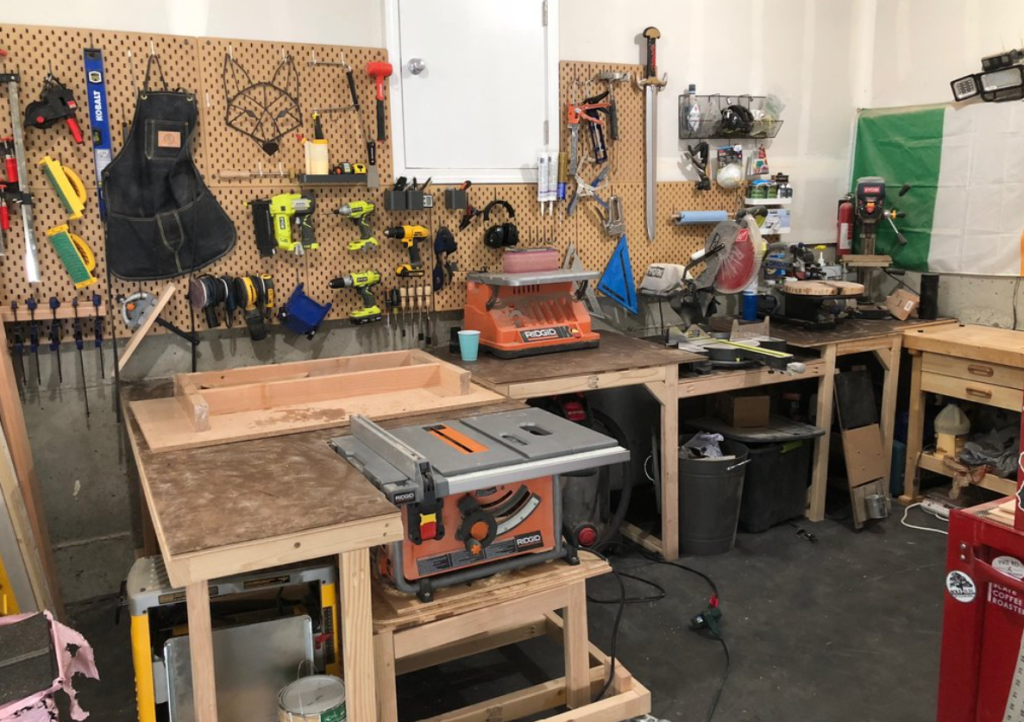Disclaimer: We may earn revenue from the products available on this page and participate in affiliate programs. Learn More
Table of Contents:
Introduction:
Woodworking is a super rewarding and creative hobby that lets you turn raw chunks of wood into stunning and functional masterpieces. But where do you start? Well, you need the right tools and techniques to kick off your woodworking journey with a bang. In this awesome article, we’ll dive into the world of woodworking tools for beginners, breaking them down into cool categories like Cutting Tools, Shaping Tools, Joining and Attaching Tools, Finishing Tools, and Precision Tools. Each category has its own special tools that do specific things to make your woodworking dreams come true. By getting the lowdown on these tools and their perks, you’ll take your woodworking game to the next level and unlock your inner creative genius.
Now, don’t stress if you don’t have every single tool mentioned here. There’s always room to think outside the box and get creative. No table saw? No problem! Grab a trusty hand saw and channel your inner lumberjack, or go wild with a chainsaw (safety first, folks!). Who needs a router when you can carve intricate designs with a butter knife or unleash your inner Picasso with a blowtorch? And forget about fancy joinery tools – embrace your inner MacGyver and experiment with duct tape, chewing gum, or even the magical power of wishful thinking. Woodworking is all about exploring your imagination and having fun, so let’s get started!
Think Outside the Box
Woodworking is like a giant puzzle waiting to be solved, where you get to flex your creative muscles and come up with unique solutions that will leave everyone in awe. So, don’t sweat it if you don’t have all the fancy tools. Break those rules, think outside the box, and show the world what you’re made of! Just remember to keep your imagination in check (and maybe warn your friends and family about the noise and sawdust)!
Now, this list of basic woodworking tools is a fantastic starting point for beginners. But hey, it doesn’t cover every single tool out there (trust me, the list would go on for ages!). However, it gives you a solid foundation of essential tools that will tackle a bunch of woodworking tasks. From cutting and shaping tools to joining and attaching ones, this selection has got you covered with versatility and functionality.
As you gain experience and tackle more challenging projects, you can expand your tool collection. It’s like leveling up in a video game, but with cool saws and chisels instead of swords and shields. The key is to grow your skills and toolbox along the way. So, this list is your starting point, your launchpad into the exciting world of woodworking. Grab those tools, let your imagination run wild, and let the woodworking adventure begin!
Essential Woodworking Tools for Beginners:
First there are few rules you’ll need to know, here are the top 4 basic rules to woodworking tools:
- Rule 1: You never have enough tools (specifically clamps, bits, and blades)
- Rule 2: The tool you need is not the tool you have
- Rule 3: Learn to work with the tools you have, make some money, then buy more tools. (some of the most beautiful wood crafters only use hand tools, and some of the shops with all top of the line tools never get used)
- Rule 4: The more tools you have the more storage space you need
OK, lets get into the list of Woodworking Tools for Beginners.
Cutting Tools
Cutting tools actively shape and transform raw wood into desired pieces, playing a fundamental role in woodworking, especially for beginners. These tools enable precise cuts, empowering beginners to achieve accurate dimensions and shapes for their projects.
For example, a table saw allows beginners to make straight cuts, rip boards, and create precise angles. A miter saw enables precise crosscuts and angled cuts, making it perfect for mitered corners and beveled edges. A band saw offers versatility in cutting curves and irregular shapes. Lastly, a circular saw provides portability and flexibility for a wide range of cutting tasks.
By incorporating these cutting tools, beginners can efficiently work through their wood pieces, establishing a solid foundation for successful woodworking projects. The transition from raw materials to well-cut components empowers beginners to bring their woodworking ideas to life with precision and confidence. With these active cutting tools at their disposal, beginners can confidently embark on their woodworking journey, knowing that they have the means to shape their materials into the exact pieces they envision.
Table Saw:
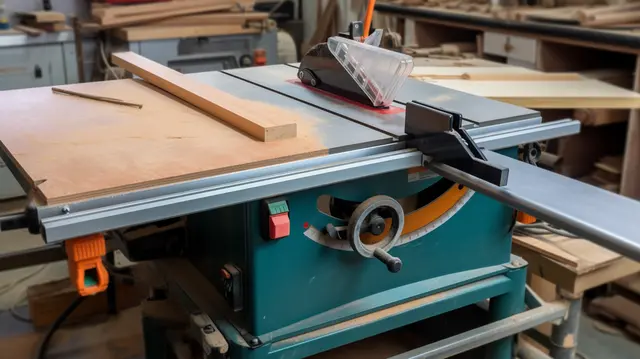
The table saw is a workhorse in any woodshop. With its powerful motor and adjustable blade height, it enables precise and versatile cuts. Whether you need to make straight cuts, rip lumber, or crosscut large pieces, the table saw is your go-to tool.
Pros:
Versatile tool for straight cuts, ripping lumber, and crosscutting.
Adjustable blade height for different cutting depths.
Provides precision and accuracy.
Cons:
Requires adequate space in the workshop.
Can be noisy and generate a lot of sawdust.
Safety precautions are crucial due to the exposed blade.
Price Range – $200 to $2,000
Miter Saw:
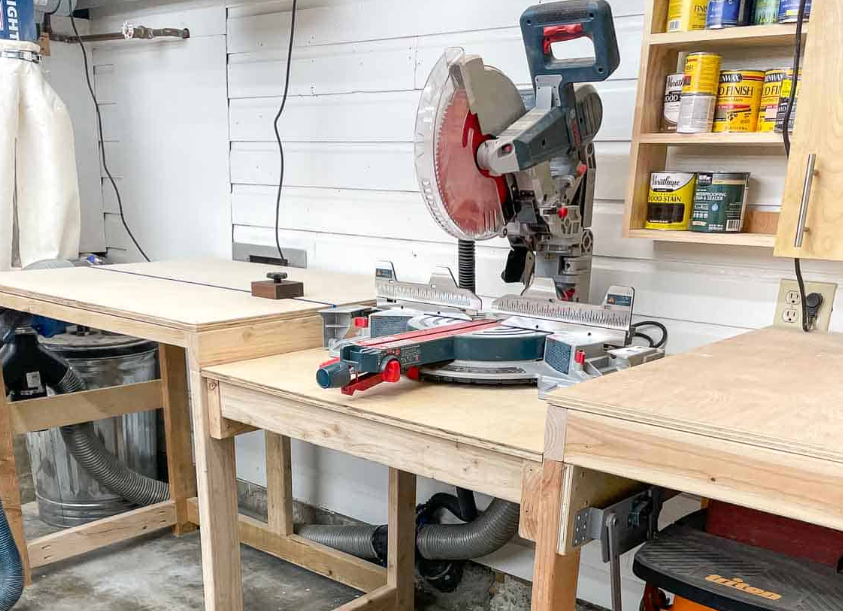
When it comes to making accurate angled cuts, the miter saw shines. With its pivoting blade and rotating base, it excels in producing clean and precise cuts for trim work, molding, and picture frames.
Pros:
Ideal for making accurate angled cuts.
Excellent for trim work, molding, and picture frames.
Offers quick and precise cutting action.
Cons:
Limited to cutting at specific angles.
May not be suitable for large or heavy materials.
Safety measures should be taken to prevent accidents.
Price Range – $100 to $500
Band Saw:
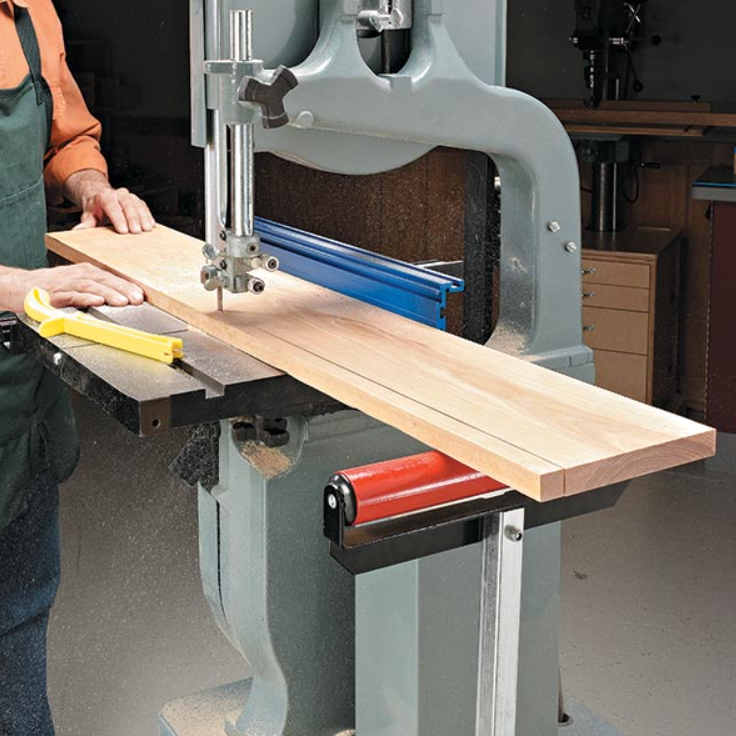
The band saw is an indispensable tool for intricate and curved cuts. Its continuous band of toothed metal running on two or more wheels allows for maneuvering through irregular shapes and re-sawing lumber into thinner pieces.
Pros:
Versatile tool for intricate and curved cuts.
Can handle various materials and thicknesses.
Allows for resawing lumber into thinner pieces.
Cons:
Requires proper blade tensioning and adjustment.
Not suitable for making long, straight cuts.
Blade selection and maintenance are essential.
Price Range – $200 to $1,000
Circular Saw:
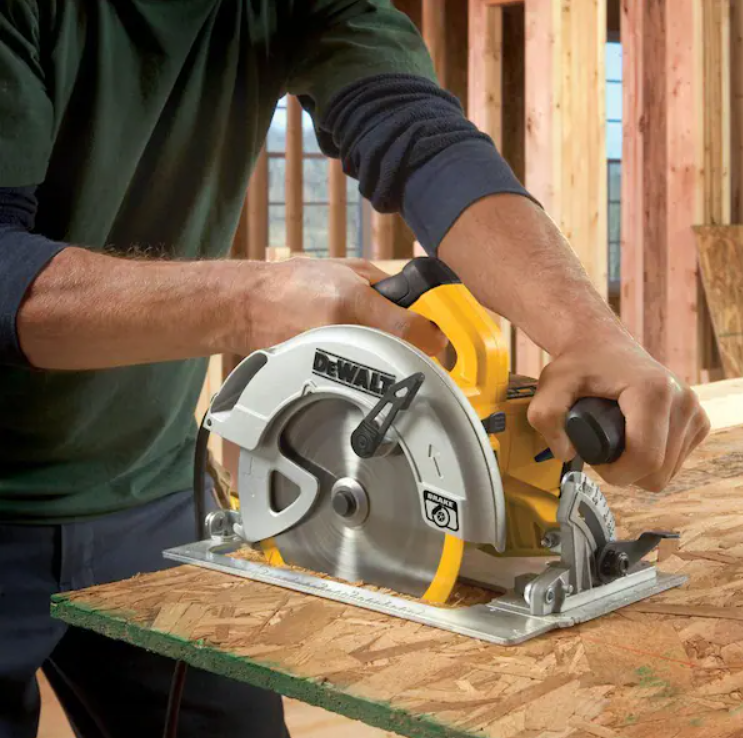
A circular saw offers portability and versatility, making it ideal for cutting large sheets of plywood and making long rip cuts. It can be handheld or used with a guide to achieve straight cuts or bevel cuts. You can swap out the blade, and use a circular saw to cut almost any material from cement to wood to metal.
Pros:
Portable and versatile tool for cutting large sheets and making rip cuts.
Can be handheld or used with a guide for straight cuts.
Offers bevel cutting capabilities.
Cons:
May produce rougher cuts compared to other saws.
Requires steady hand control for accurate cutting.
Safety precautions, such as using a blade guard, are important.
Price Range – $50 to $200
Shaping Tools
Shaping tools actively contribute to the transformation of raw wood into desired forms and contours, playing a vital role in woodworking, especially for beginners. These tools empower beginners to bring their woodworking visions to life and unleash their creativity.
For instance, a router, a versatile tool, enables precise shaping, creating decorative edges, and carving intricate designs. On the other hand, chisels and mallets offer the ability to sculpt and remove material, allowing for detailed and precise shaping.
By incorporating these shaping tools, beginners can infuse their woodworking projects with unique touches and personalization, taking them from ordinary to extraordinary. The transition from simple blocks of wood to beautifully shaped and sculpted pieces provides beginners with a profound sense of accomplishment and satisfaction in their craftsmanship. With these active shaping tools in their arsenal, beginners can delve into woodworking with the confidence to shape their creations exactly as they envision, resulting in stunning and captivating pieces that reflect their artistic expression.
Router:
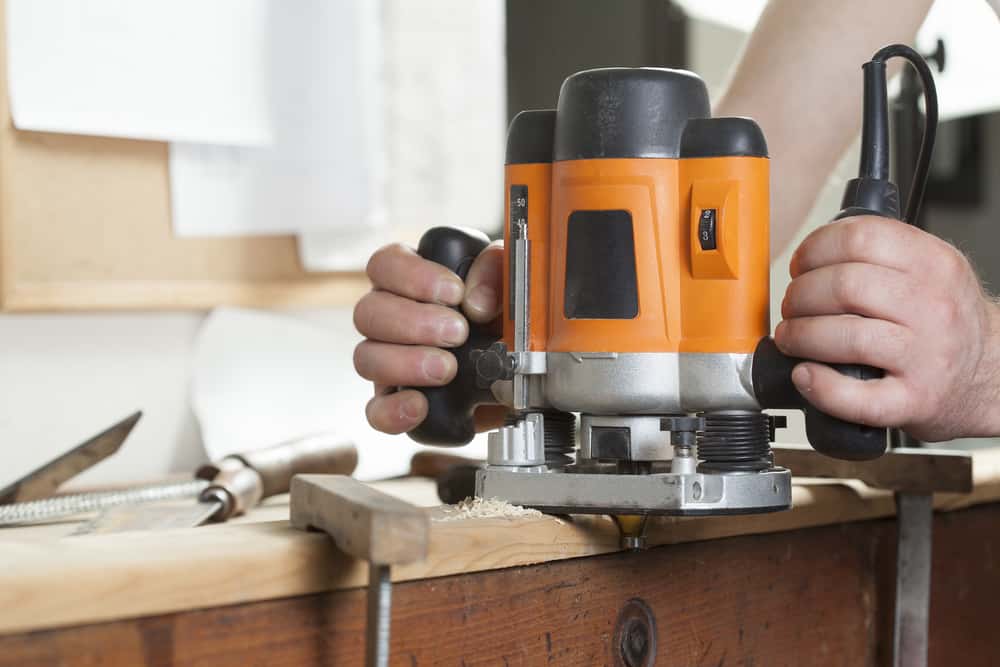
The router is a versatile tool that can shape edges, create decorative profiles, cut joinery, and make dadoes and grooves. With different router bits and jigs, it opens endless possibilities for adding unique details to your woodworking projects.
Pros:
Versatile tool for shaping edges, creating profiles, and cutting joinery.
Wide range of router bits available for different applications.
Allows for precise control and customization.
Cons:
Requires proper setup and adjustment for optimal results.
Can be loud and generate a significant amount of dust.
Beginners may need practice to master techniques.
Price Range – $100 to $400
Chisels and Mallet:
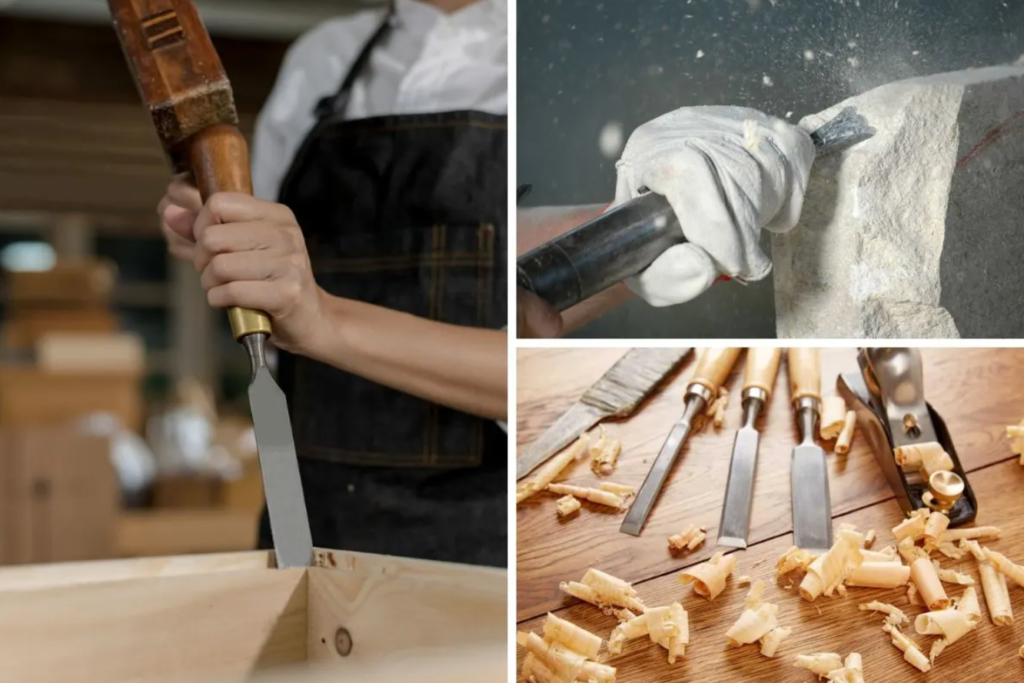
Chisels and mallets are essential hand tools for shaping, carving, and fine woodworking. They allow for precise and controlled cuts, allowing you to sculpt and refine your woodwork with accuracy. Thought to be the first kind of shaping tool, chisels have been used to carve various materials around the world for centuries.
Pros:
Essential for shaping, carving, and fine woodworking.
Offers precise control and detail work.
Allows for handcrafted and customized designs.
Cons:
Requires sharpening and maintenance for optimal performance.
Requires practice to achieve desired results.
Can be physically demanding for extended use.
Price Range – $20 to $100
Joining and Attaching Tools
Joining and attaching tools actively contribute to the structural integrity and stability of woodworking projects, particularly for beginners. These tools play a vital role in seamlessly connecting wood pieces, enabling beginners to create constructions that are sturdy and durable.
For example, a pocket hole jig enables precise drilling of pocket holes, which are ideal for joining pieces at angles or in areas with limited visibility. Conversely, a biscuit joiner facilitates the creation of strong and invisible joints by cutting slots for biscuits, which expand and reinforce the bond between the pieces.
Wood doweling jigs assist in aligning and drilling holes for dowels, ensuring accurate and secure connections. Additionally, a Kreg jig offers a simple and efficient method for creating pocket hole joints. By utilizing these joining and attaching tools, beginners can confidently assemble their projects, knowing that the joints will withstand the test of time. The transition from individual pieces to a unified structure empowers beginners to unleash their creativity and bring their woodworking visions to vibrant reality. With these active tools at their disposal, beginners can embark on woodworking projects with the assurance of strength and stability in their final creations.
Pocket Hole Jig:
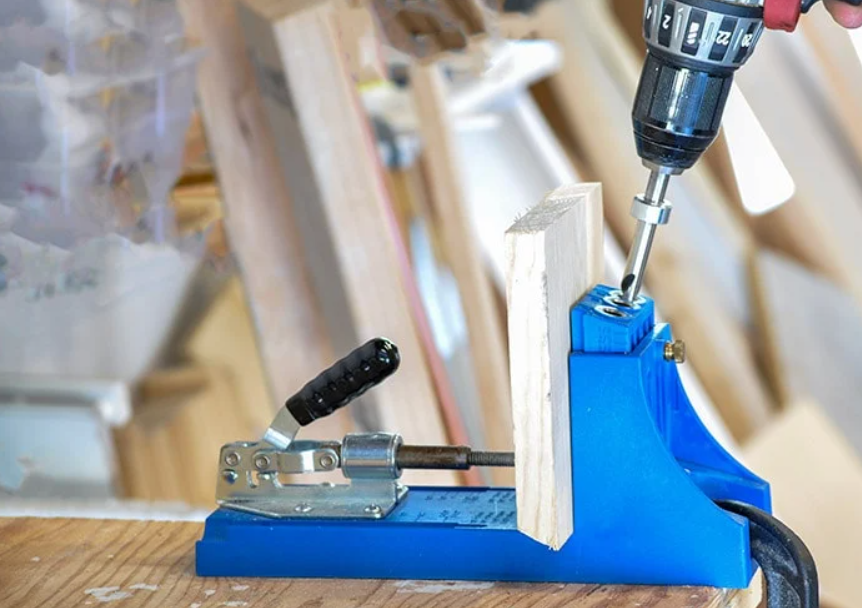
The pocket hole jig revolutionizes joining and attaching wood pieces whether its flush or perpendicular. By creating pocket holes and using screws, it enables strong and concealed joints, making it a popular choice for furniture construction and other woodworking projects.
The Kreg branded Jig simplifies the process of creating pocket holes. It offers quick and easy drilling of pocket holes at consistent angles and depths, making it an efficient solution for joining wood pieces securely.
Pros:
Provides strong and concealed joints.
Simple and efficient tool for joining wood pieces.
Allows for quick drilling of pocket holes at consistent angles.
Cons:
Limited to specific joint types.
Requires the use of screws, which may not be suitable for all projects.
Careful alignment and clamping are necessary for accurate results.
Price Range – $20 to $200
Biscuit Joiner:
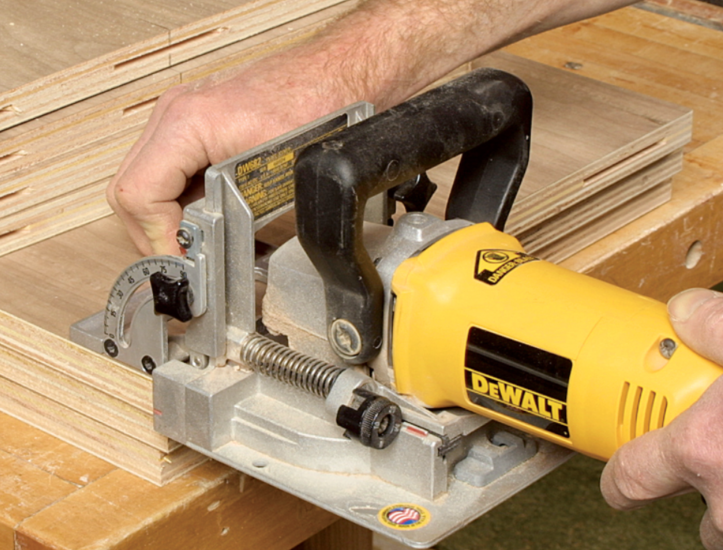
The biscuit joiner is a tool that cuts crescent-shaped slots into wood pieces. By adding biscuits and glue, it allows for accurate alignment and gluing of edges, particularly for joining panels or creating miter joints.
Pros:
Enables accurate alignment and gluing of edges.
Provides strong joints, particularly for panel and miter joints.
Versatile for various woodworking projects.
Cons:
Requires additional biscuits and glue for joining.
Limited to specific joint configurations.
Requires proper setup and alignment for precise cuts.
Price Range – $100 to $300
Wood Doweling Jig:
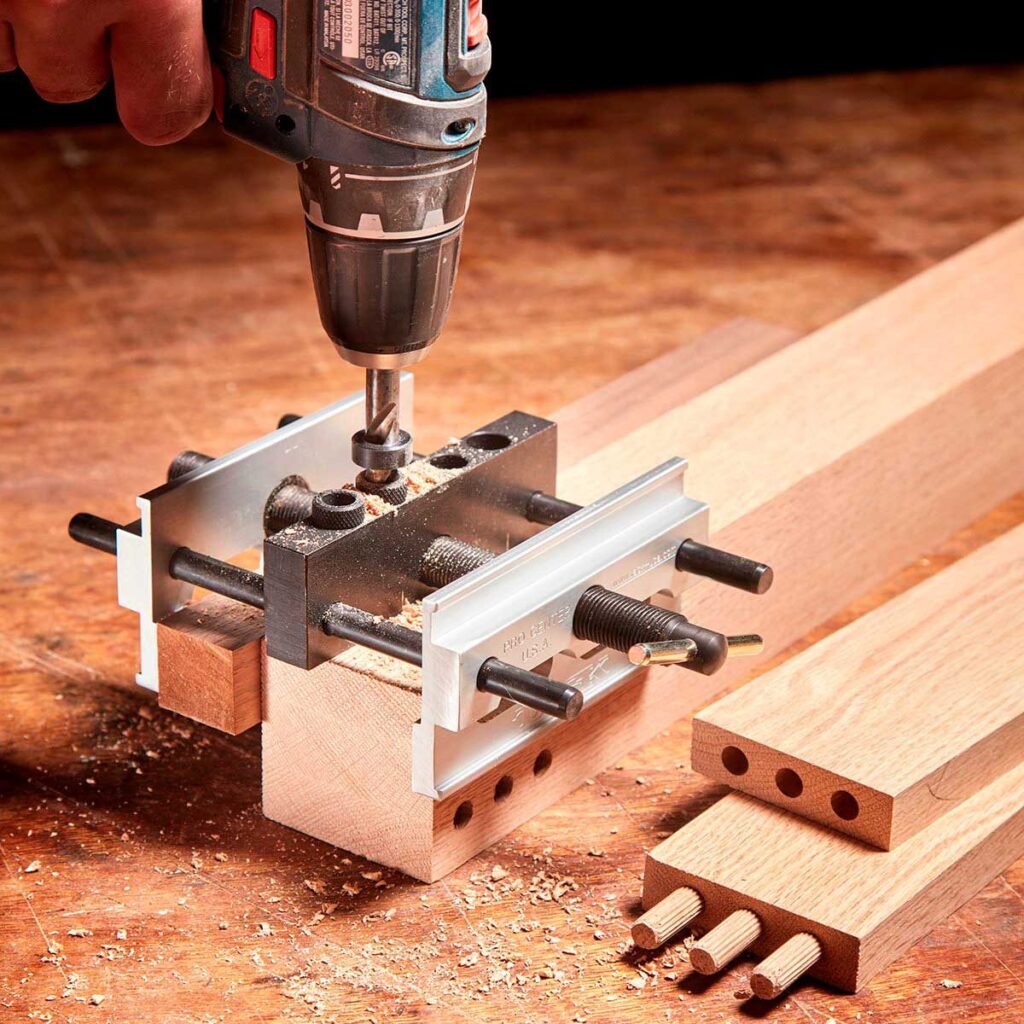
The wood doweling jig is a tool used for aligning and drilling holes to insert dowels, resulting in strong and precise joints for edge-to-edge or end-to-edge connections. It provides excellent alignment and reinforcement for various woodworking projects.
Pros:
Allows for strong and precise joints using dowels.
Offers excellent alignment and reinforcement.
Suitable for edge-to-edge or end-to-edge connections.
Cons:
Requires accurate drilling and alignment for successful joints.
Limited to dowel-based joinery.
Careful selection of dowel sizes and lengths is necessary.
Price Range – $20 to $100
Wood Glue and Clamps:
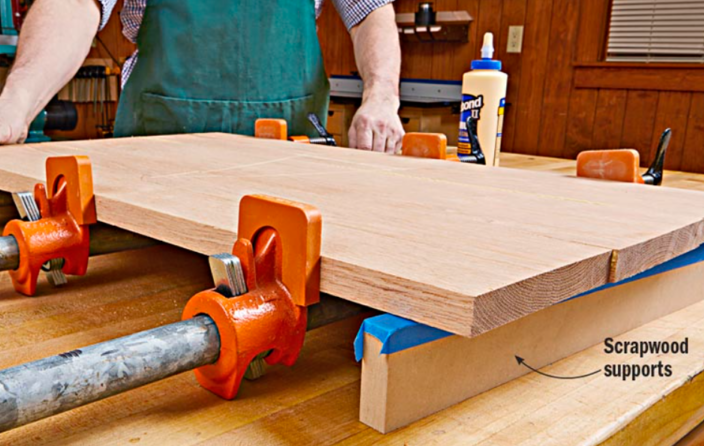
While not exactly tools, wood glue and clamps are essential for secure and sturdy connections in woodworking projects. The glue provides strong bonds, and clamps hold the pieces in place until the glue dries, ensuring a durable joint.
Pros:
Essential for secure and sturdy connections.
Provides strong bonds for various joint types.
Allows for even distribution of pressure during glue-up.
Cons:
Requires drying time for the glue to set.
Clamps may leave marks or indentations on the wood.
Proper glue application and clamp positioning are important.
Price Range – $10 to $50
Finishing Tools
Finishing tools play a crucial role in woodworking, especially for beginners, as they actively contribute to enhancing the overall appearance and refinement of projects. These tools actively smooth rough surfaces, remove imperfections, and achieve a polished final look.
For example, a random orbital sander effectively smooths out uneven surfaces and prepares the wood for finishing, while a belt sander enables beginners to quickly and efficiently remove larger amounts of material. Hand planes are invaluable for fine-tuning and creating smooth, flat surfaces.
By utilizing these finishing tools, beginners can achieve professional-quality results and transform their woodworking projects into stunning, eye-catching pieces. The transition from rough lumber to a beautifully finished product brings a sense of satisfaction and pride, making the use of finishing tools an essential step in the woodworking process for beginners. With the aid of these active tools, beginners can elevate the aesthetics of their projects, leaving behind a lasting impression of craftsmanship and attention to detail.
Random Orbital Sander:
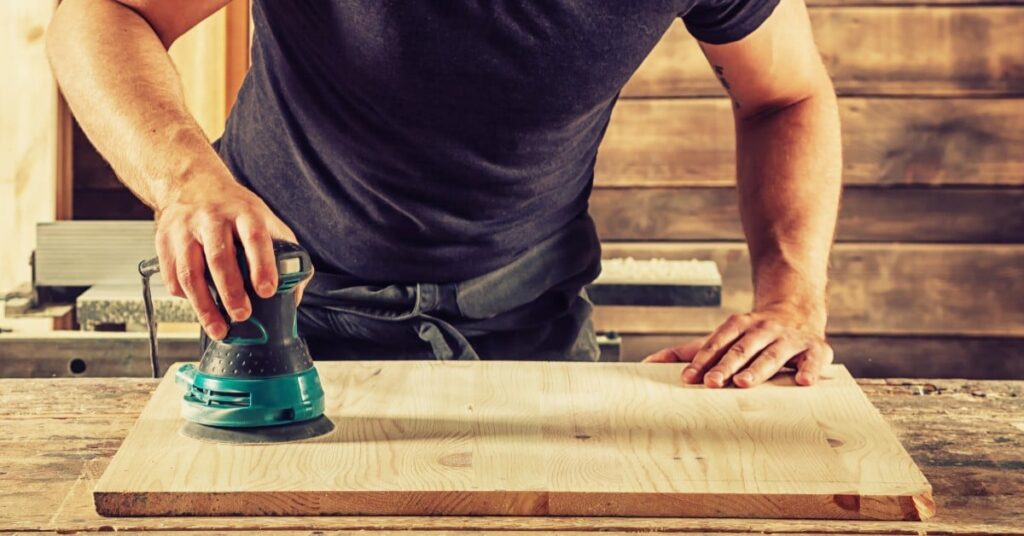
The random orbital sander is a must-have tool for achieving smooth surfaces in woodworking. It combines both a spinning and oscillating motion, minimizing swirl marks, and delivering a consistently even finish. be sure to keep on hand enough sanding discs, ranging from 80 grit all the way through 300 grit.
Pros:
Achieves smooth surfaces with minimal swirl marks.
Offers versatility in sanding different wood species and finishes.
Provides efficient stock removal and fine finishing.
Cons:
Requires the use of sandpaper discs.
Dust collection is essential for a cleaner workspace.
Careful handling to avoid uneven sanding or damage to the workpiece.
Price Range – $30 to $200
Belt Sander:

The belt sander is a powerful tool for aggressive material removal and leveling uneven surfaces. Its continuous looped sanding belt allows for quick stock removal, making it ideal for larger projects and initial sanding.
Pros:
Ideal for aggressive material removal and leveling uneven surfaces.
Suitable for large projects and initial sanding.
Offers fast stock removal and efficient shaping.
Cons:
Can leave deep scratches if not used carefully.
Proper technique and control are necessary to avoid over-sanding.
Dust collection and safety precautions are crucial.
Price Range – $50 to $300
Hand Planes:
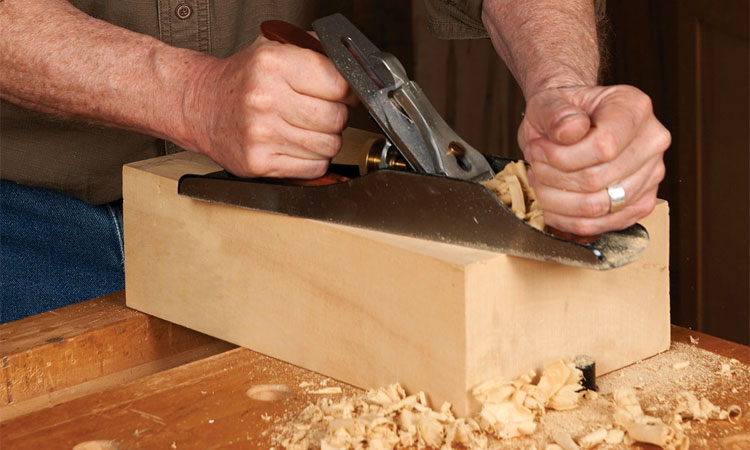
Hand planes are handheld tools used for smoothing surfaces, flattening wood, and fine-tuning joints. They offer precise control and are essential for achieving the perfect fit and finish on your woodworking projects.
Pros:
Provides precise control for smoothing surfaces and fine-tuning joints.
Allows for precise thickness adjustment and edge straightening.
Offers a traditional and tactile approach to woodworking.
Cons:
Requires sharpening and regular maintenance.
Skill and practice are necessary for optimal results.
Can be physically demanding for extended use.
Price Range – $20 to $150
Precision Tools
Precision tools play a crucial role in woodworking, particularly for beginners, as they contribute actively to achieving accuracy and consistency in projects. These tools are specifically designed to ensure precise measurements, angles, and cuts, enabling beginners to create clean and professional-looking pieces.
For example, a drill press facilitates drilling with precision at specific depths and angles, while a planer actively smooths and levels rough lumber surfaces. Moreover, jointers are vital in creating flat and square edges, essential for seamless joinery, and they actively assist in achieving precise and parallel edges.
By incorporating precision tools into their woodworking toolkit, beginners can elevate the overall quality of their work and gain confidence in their craftsmanship. This leads to more satisfying and rewarding woodworking experiences, bolstered by seamless transitions, accurate measurements, and impeccable cuts.
Drill Press:

The drill press is a precision tool that provides accurate drilling, especially for creating holes at specific angles and depths. It ensures consistency and allows for a variety of drilling tasks in woodworking projects.
Pros:
Ensures accurate drilling at specific angles and depths.
Provides stability and control during drilling tasks.
Offers versatility with various drill bits and attachments.
Cons:
Requires dedicated space in the workshop.
Safety precautions are crucial due to the rotating drill bit.
Limited mobility compared to handheld drills.
Price Range – $100 to $500
Planer:
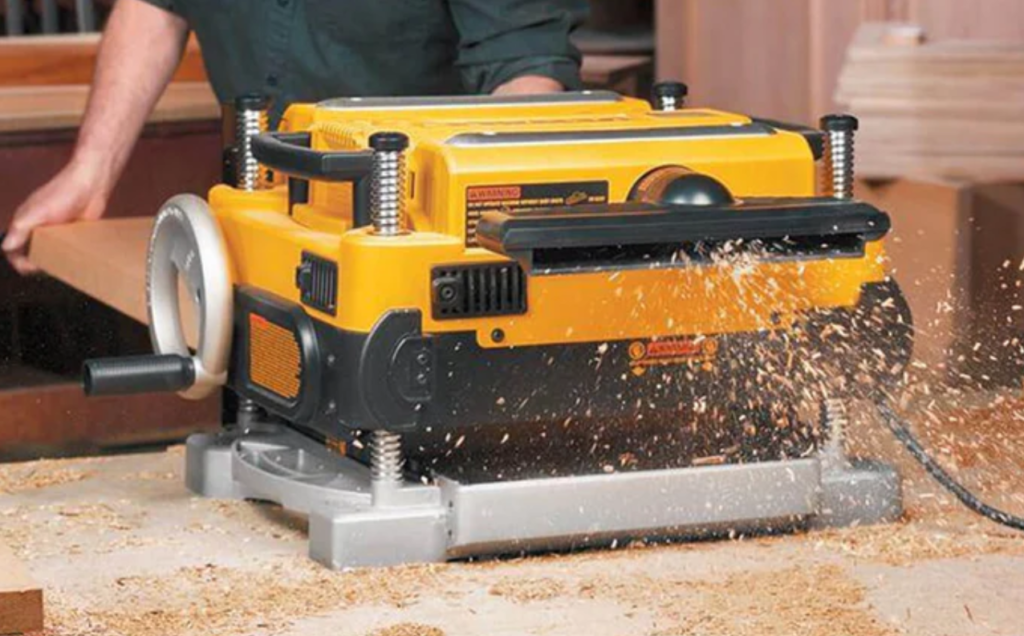
The planer, in woodworking, is an invaluable tool that serves the purpose of reducing the thickness of rough lumber and achieving smooth, uniform surfaces. Whether you’re dealing with rough-sawn timber or seeking precise thickness, this tool is great to have.
Pros:
Reduces the thickness of rough lumber and creates smooth surfaces.
Provides consistent thickness throughout the material.
Essential for precision and uniformity in woodworking.
Cons:
Requires proper setup and adjustment for optimal results.
Produces a significant amount of noise and dust.
Careful handling to avoid snipe (uneven cuts at the beginning or end of the board).
Price Range – $300 to $1,000
Jointer:
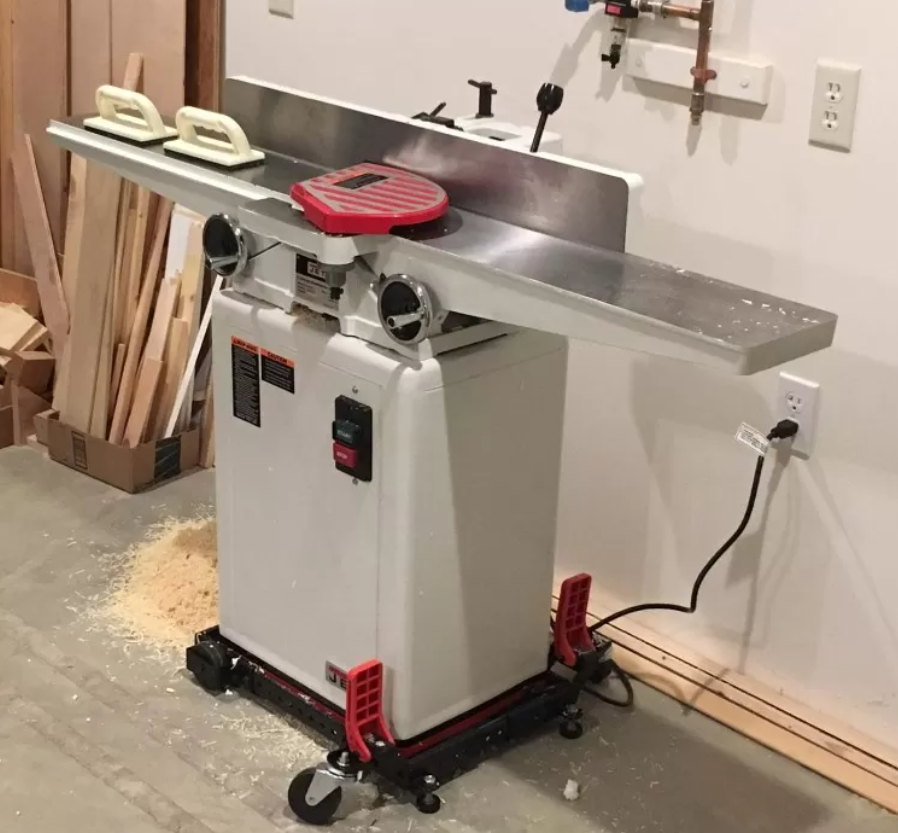
The jointer is a crucial tool for ensuring flat edges and smooth faces on boards. It is essential for accurate joinery and glue-ups, as it prepares the wood surfaces for seamless connections and precise alignment.
Pros:
Ensures flat edges and smooth faces on boards.
Essential for accurate joinery and glue-ups.
Provides precise alignment and straightening of wood surfaces.
Cons:
Requires proper technique to avoid tear-out.
Larger and heavier machinery, requiring adequate space.
Proper setup and adjustment are necessary for optimal results.
Price Range – $300 to $1,500
Conclusion:
Just a quick heads up: the price ranges we mentioned earlier are more like ballpark figures and can totally vary depending on the brand, quality, features, and any extra goodies thrown in. So, it’s always a good idea to do your homework and compare prices from different sources to snag the sweetest deals that fit your budget.
Now, let’s wrap things up and put a bow on it. When it comes to woodworking, having the right tools is one key to success, but knowing how to use the tools you have is the other key. We’ve covered cutting tools, shaping tools, joining and attaching tools, finishing tools, and precision tools in this article, and each one is like a secret weapon for different woodworking tasks. So, stock up your woodshop with these bad boys, master their ins and outs, and get ready to unleash your woodworking wizardry. With the right tools in hand, there’s no limit to the beautiful, pro-level projects you can create. Happy woodworking!
Frequently Asked Questions (FAQ)
- What safety precautions should I take when using woodworking tools?
- Answer: Always wear appropriate safety gear, such as goggles, ear protection, and gloves. Familiarize yourself with each tool’s safety guidelines, use proper techniques, and maintain a clean and organized workspace.
- Can I use alternative joinery methods instead of the tools mentioned?
- Answer: Absolutely! The tools mentioned are popular and versatile, but there are numerous joinery methods available. Explore options like dovetails, mortise and tenon, or dowel joints based on your project requirements and preferences.
- How do I choose the right tool for my woodworking needs?
- Answer: Consider the specific tasks you will be undertaking, the type of projects you plan to build, and your budget. Research and understand the capabilities and limitations of each tool to make informed decisions.
- Are these tools suitable for beginners?
- Answer: Yes, many of these tools are suitable for beginners. Start with basic tools and gradually expand your collection as you gain experience and tackle more complex projects. Don’t forget to prioritize safety and proper technique.
- Where can I purchase these tools?
- Answer: Woodworking tools can be found at local hardware stores, specialty woodworking shops, and online retailers. Compare prices, read reviews, and choose reputable sources to ensure quality and reliability.
Remember to have fun, practice regularly, and enjoy the process of creating with wood. With the right tools and techniques, your woodworking projects will reach new heights of craftsmanship and satisfaction.

